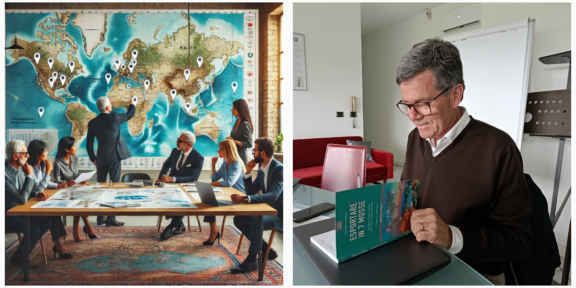I was refueling at my usual gas station located in the heart of the Schio industrial area. The manager, with whom I have a certain rapport, told me that there is less traffic and many companies have added an extra week of furlough to the usual three weeks of summer shutdown. Complaints are the order of the day. Without conducting market surveys, this is often enough to confirm a feeling I had already perceived while visiting some companies.
The Schio industrial area is an important production zone that hosts numerous companies operating in various sectors, especially in metalworking. With over four million square meters of surface, it is a vital hub for the economy of Vicenza.
A SOLUTION: EXPANDING INTO NEW MARKETS

In this challenging context, a smart way to use time effectively is to seek new clients in different sectors and geographic areas. Let me share the experience of a metal fabrication company I collaborated with. We worked together for six days, following this approach based on the use of digital tools:
- Market Analysis: Using tools like Export Planning and Statista, we identified geographic areas to focus on, also discovering Italian regions where the company had little presence.
- Internal Analysis: Through a simple SWOT analysis, we framed the current client base and identified the company’s strengths and weaknesses, also benchmarking against competitors.
- Creating Contact Lists: With Matchplat, we generated target company lists in the chosen geographic areas.
- Optimizing LinkedIn Profiles: We updated personal and company profiles, translating them into the languages of the target countries using ChatGPT.
- Editorial Plan: We developed an editorial plan for the company’s LinkedIn page, creating content by giving the right instructions (prompts) to ChatGPT.
- Identifying Contacts: Using LinkedIn Sales Navigator, we identified the individuals to contact within the target companies.
- First Contact: Finally, we initiated the first contact via LinkedIn and email, with messages carefully tailored in the target market’s language, following a precise scheme.
THE RESULTS
At the end of the six days, we contacted around 200 purchasing offices, receiving responses, information requests, and thus initiating potential collaborations. This method of working has proven effective, as shown by the testimonials of clients who have used my consulting services. Visit my LinkedIn profile for more details.
TTRAINING: AN OPPORTUNITY NOT TO BE MISSED
An often-overlooked but highly valuable aspect is training. When work is plentiful, everyone is always in a rush, and there is never time to train employees. However, during a slow period, this situation can be used to offer training, learn new tools, and improve skills. These projects often fall under training initiatives funded by organizations like Fondimpresa. Employees appreciate these initiatives, which not only increase their skills but also their motivation and sense of belonging to the company.
LOCAL SUPPORT
For businesses in the Vicenza province, I collaborate with Confindustria Vicenza, FarExport help desk, along with Lara Pressanto and Anna Barzanti. This young and motivated team works actively on projects and often manages to find financial contributions to reduce project costs.
CONCLUSIONS
In an economic slowdown, SMEs can greatly benefit from exploring new markets and training their employees. With a structured approach and the use of digital tools, it is possible to turn a crisis period into an opportunity for growth. For more details on expansion strategies and digital tools, I invite you to read my books “Exporting in 7 Steps” and “8 Digital Tools for SMEs,” co-authored with Claudia Zarabara.
For more information, contact info@progetticommerciali.com.
